Blog
Dee Dee Bridgewater (née Denise Garrett, May 27, 1950) is an American jazz singer. She is a three-time Grammy Award-winning singer-songwriter, as well as a Tony Award-winning stage actress. For 23 years, she was the host of National Public Radio’s syndicated radio show JazzSet with Dee Dee Bridgewater. She is a United Nations Goodwill Ambassador for the Food and Agriculture Organization.
Born Denise Eileen Garrett in Memphis, Tennessee, she was raised Catholic in Flint, Michigan. Her father, Matthew Garrett, was a jazz trumpeter and teacher at Manassas High School, and through his playing, she was exposed to jazz early on. At the age of sixteen, she was a member of a Rock and R&B trio, singing in clubs in Michigan. At 18, she studied at Michigan State University before she went to the University of Illinois at Urbana-Champaign. With the school’s jazz band, she toured the Soviet Union in 1969.
The next year, she met trumpeter Cecil Bridgewater, and after their marriage, they moved to New York City, where Cecil played in Horace Silver‘s band. In the early 1970s, Bridgewater joined the Thad Jones-Mel Lewis Jazz Orchestra as lead vocalist. This marked the beginning of her jazz career, and she performed with many of the great jazz musicians of the time, such as Sonny Rollins, Dizzy Gillespie, Dexter Gordon, Max Roach, Rahsaan Roland Kirk, Wayne Garfield, and others. She performed at the Monterey Jazz Festival in 1973. In 1974, her first solo album, entitled Afro Blue, appeared, and she performed on Broadway in the musical The Wiz. For her role as Glinda the Good Witch she won a Tony Award in 1975 as “Best Featured Actress”, and the musical also won the 1976 Grammy Award for Best Musical Show Album.
https://www.youtube.com/watch?v=i8_YRzDxpe4
more...Niels-Henning Ørsted Pedersen (Danish pronunciation: [ne̝lsˈhene̝ŋ ˈɶɐ̯steð ˈpʰeðɐsn̩], 27 May 1946 – 19 April 2005), also known by his abbreviated nickname NHØP, was a Danish jazz double bassist.
The Montmartre was a regular stop-off for touring American Jazz stars, and as a member of the house band, the young Ørsted Pedersen performed with saxophonists such as Sonny Rollins, Dexter Gordon, Rahsaan Roland Kirk and Stan Getz, and pianist Bill Evans, with whom he toured in Europe in 1965. During the 1960s, Ørsted Pedersen played with a series of other important American jazzmen who were touring or resident in Denmark, including Ben Webster,[4] Brew Moore, Bud Powell, Count Basie, Roy Eldridge, Dizzy Gillespie, Jackie McLean, and vocalist Ella Fitzgerald. He also played with Jean-Luc Ponty, and became the bassist of choice whenever a big-name musician was touring Copenhagen. He was awarded Best Bass Player of the Year by DownBeat Critics’ Poll in 1981.
more...Ramsey Emmanuel Lewis Jr. (born May 27, 1935) is an American jazz composer, pianist and radio personality. Lewis has recorded over 80 albums and has received five gold records and three Grammy Awards so far in his career.
Ramsey Lewis was born in Chicago, Illinois, to Ramsey Lewis Sr. and Pauline Lewis. He began taking piano lessons at the age of four. Lewis would eventually join a jazz group called the clefs. He later formed the Ramsey Lewis Trio with drummer Isaac “Red” Holt and bassist Eldee Young.[1] They eventually joined up with Chess Records. During 1956 the trio issued their debut album, Ramsey Lewis and his Gentle-men of Swing.[3] Following their 1965 hit “The In Crowd” (the single reached No. 5 on the pop charts, and the album No. 2) they concentrated more on pop material. Young and Holt left in 1966 to form Young-Holt Unlimited and were replaced by Cleveland Eaton and Maurice White. White left to form Earth, Wind & Fire and was replaced by Morris Jennings in 1970. Later, Frankie Donaldson and Bill Dickens replaced Jennings and Eaton; Felton Crews also appeared on many 1980’s releases.
By 1966, Lewis was one of the nation’s most successful jazz pianists, topping the charts with “The In Crowd”, “Hang On Sloopy“, and “Wade in the Water“. All three singles each sold over one million copies and were awarded gold discs. Many of his recordings attracted a large non-jazz audience. In the 1970s, Lewis often played electric piano, although by later in the decade he was sticking to acoustic and using an additional keyboardist in his groups.
In 1994, Lewis appeared on the Red Hot Organization‘s compilation album, Stolen Moments: Red Hot + Cool, alongside other prominent jazz artists Herbie Hancock and Roy Ayers. The album, meant to raise awareness and funds in support of the AIDS epidemic in relation to the African American community, was heralded as “Album of the Year” by TIME magazine.
https://www.youtube.com/watch?v=UQNJcsEtMYo
more...Kenny Dennis (born May 27, 1930) is a Philadelphia-born American jazz drummer. He has played on albums for Nancy Wilson, Sonny Stitt, Sonny Rollins, Johnny Griffin, Oscar Brown Jr., Charles Mingus, Billy Taylor, and Mal Waldron.
Dennis began his musical career in the United States Army Band, playing drums in three bands from 1948-1952. After being discharged, he connected with junior high school mate, pianist Ray Bryant and became part of The Ray Bryant Trio along with Jimmy Rowser on bass. They became the house trio at the North Philadelphia Jazz Club, Blue Note where they played for such jazz artists as Kai Winding, Chris Connor and Sonny Stitt. His career next took him to New York, where he worked with artists including Miles Davis, Phineas Newborn, Jr., Billy Taylor, Erroll Garner, Charles Mingus and Sonny Rollins.
more...Clifford Everett “Bud” Shank Jr. (May 27, 1926 – April 2, 2009) was an American alto saxophonist and flautist. He rose to prominence in the early 1950s playing lead alto and flute in Stan Kenton‘s Innovations in Modern Music Orchestra and throughout the decade worked in various small jazz combos. He spent the 1960s as a first-call studio musician in Hollywood. In the 1970s and 1980s, he performed regularly with the L. A. Four. Shank ultimately abandoned the flute to focus exclusively on playing jazz on the alto saxophone. He also recorded on tenor and baritone sax. His most famous recording is probably the version of “Harlem Nocturne” used as the theme song in Mickey Spillane’s Mike Hammer. He is also well known for the alto flute solo on the song “California Dreamin’” recorded by The Mamas & the Papas in 1965. Bud Shank was born in Dayton, Ohio, United States.[1] He began with clarinet in Vandalia, Ohio, but had switched to saxophone before attending the University of North Carolina. While at UNC, Shank was initiated into the Pi Kappa Alpha fraternity. In 1946, he worked with Charlie Barnet before moving on to Kenton and the West coast jazz scene. He also had a strong interest in what might now be termed world music, playing Brazilian-influenced jazz with Laurindo Almeida in 1953 and 1954. In 1958, he is the first American jazz musician to record in Italy, with an Italian jazz orchestra conducted by Ezio Leoni(aka Len Mercer), paving the way for Chet Baker and others who would follow Shank’s tracks recording in Milan with Maestro Leoni. His world music collaborations continued in 1962, fusing jazz with Indian traditions in collaboration with Indian composer and sitar player Ravi Shankar
more...Soleá (Soleares) por Buleriás is, as it’s name suggests, a Soleares with the pace and drive of a Bulerías. Often considered a hybrid form, Soléa por bulerías (also called Soleares por bulerías) is more like a point on the continuum between Soleares and Bulerías. Determining just where that point is can be a source of contention among professionals and aficionados. There are resources that state quite definitely that it is a sped up soleares and others that make it clear that it’s a slowed down bulerías. Adding to the potential for confusion, there are different names for this form: Bulería por Soleá, Soleabulería, Bulerías al golpe and Bulería pa escuchar.
more...Magnificent spiral galaxy NGC 4565 is viewed edge-on from planet Earth. Also known as the Needle Galaxy for its narrow profile, bright NGC 4565 is a stop on many telescopic tours of the northern sky, in the faint but well-groomed constellation Coma Berenices. This sharp, colorful image reveals the galaxy’s boxy, bulging central core cut by obscuring dust lanes that lace NGC 4565’s thin galactic plane. NGC 4565 itself lies about 40 million light-years distant and spans some 100,000 light-years. Easily spotted with small telescopes, sky enthusiasts consider NGC 4565 to be a prominent celestial masterpiece Messier missed.
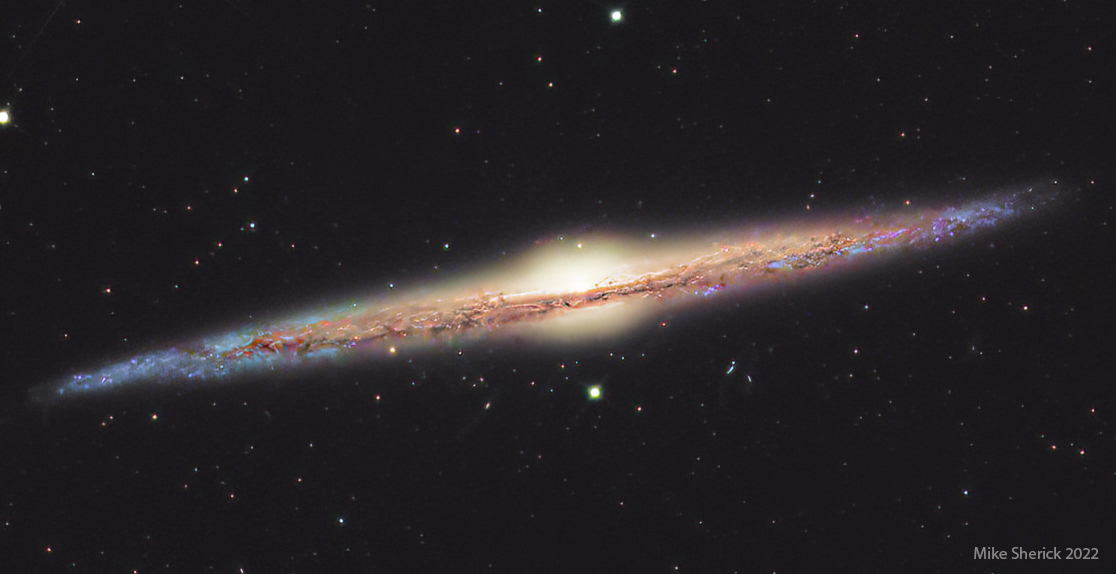
more...
Miles Dewey Davis III (May 26, 1926 – September 28, 1991) was an American trumpeter, bandleader, and composer. He is among the most influential and acclaimed figures in the history of jazz and 20th-century music. Davis adopted a variety of musical directions in a five-decade career that kept him at the forefront of many major stylistic developments in jazz.
Born in Alton, Illinois, and raised in East St. Louis, Davis left to study at Juilliard in New York City, before dropping out and making his professional debut as a member of saxophonist Charlie Parker‘s bebopquintet from 1944 to 1948. Shortly after, he recorded the Birth of the Cool sessions for Capitol Records, which were instrumental to the development of cool jazz. In the early 1950s, Davis recorded some of the earliest hard bop music while on Prestige Records but did so haphazardly due to a heroin addiction. After a widely acclaimed comeback performance at the Newport Jazz Festival, he signed a long-term contract with Columbia Records and recorded the album ‘Round About Midnight in 1955. It was his first work with saxophonist John Coltrane and bassist Paul Chambers, key members of the sextet he led into the early 1960s. During this period, he alternated between orchestral jazz collaborations with arranger Gil Evans, such as the Spanish music-influenced Sketches of Spain (1960), and band recordings, such as Milestones (1958) and Kind of Blue (1959). The latter recording remains one of the most popular jazz albums of all time, having sold over five million copies in the U.S.
Davis made several line-up changes while recording Someday My Prince Will Come (1961), his 1961 Blackhawk concerts, and Seven Steps to Heaven (1963), another mainstream success that introduced bassist Ron Carter, pianist Herbie Hancock, and drummer Tony Williams. After adding saxophonist Wayne Shorter to his new quintet in 1964, Davis led them on a series of more abstract recordings often composed by the band members, helping pioneer the post-bop genre with albums such as E.S.P (1965) and Miles Smiles (1967),[5] before transitioning into his electric period. During the 1970s, he experimented with rock, funk, African rhythms, emerging electronic music technology, and an ever-changing line-up of musicians, including keyboardist Joe Zawinul, drummer Al Foster, and guitarist John McLaughlin. This period, beginning with Davis’s 1969 studio album In a Silent Way and concluding with the 1975 concert recording Agharta, was the most controversial in his career, alienating and challenging many in jazz. His million-selling 1970 record Bitches Brew helped spark a resurgence in the genre’s commercial popularity with jazz fusion as the decade progressed.
After a five-year retirement due to poor health, Davis resumed his career in the 1980s, employing younger musicians and pop sounds on albums such as The Man with the Horn (1981) and Tutu (1986). Critics were often unreceptive but the decade garnered Davis his highest level of commercial recognition. He performed sold-out concerts worldwide, while branching out into visual arts, film, and television work, before his death in 1991 from the combined effects of a stroke, pneumonia and respiratory failure. In 2006, Davis was inducted into the Rock and Roll Hall of Fame, which recognized him as “one of the key figures in the history of jazz”. Rolling Stone described him as “the most revered jazz trumpeter of all time, not to mention one of the most important musicians of the 20th century,” while Gerald Early called him inarguably one of the most influential and innovative musicians of that period.
Miles Dewey Davis III was born on May 26, 1926, to an affluent African-American family in Alton, Illinois, 15 miles (24 kilometers) north of St. Louis. He had an older sister, Dorothy Mae (1925-1996), and a younger brother, Vernon (1929-1999). His mother, Cleota Mae Henry of Arkansas, was a music teacher and violinist, and his father, Miles Dewey Davis Jr., also of Arkansas, was a dentist. They owned a 200-acre (81 ha) estate near Pine Bluff, Arkansas with a profitable pig farm. In Pine Bluff, he and his siblings fished, hunted, and rode horses. Davis’s grandparents were the owners of an Arkansas farm where he would spend many summers.
more...Rubén González Fontanills (26 May 1919 – 8 December 2003) was a Cuban pianist. Together with Lilí Martínez and Peruchín he is said to have “forged the style of modern Cuban piano playing in the 1940s”.
Between the 1940s and his retirement in the 1980s, he played with Cuba’s most successful acts, including Paulina Álvarez, Arsenio Rodríguez, Orquesta América del 55, Orquesta Riverside and Enrique Jorrín. In the 1990s, he came out of retirement to play in the revival ensembles Afro-Cuban All Stars and Buena Vista Social Club, also recording solo material and performing live until 2002.
González was born in Santa Clara, Cuba, on 26 May 1919. His family moved to the small village of Encrucijada when he was 6 years old. He took up the piano at age seven and graduated from the Cienfuegos Conservatory at age 15.
He grew up wanting to be a doctor and studied medicine, thinking music would remain a hobby he could pursue by night. However, he abandoned his studies after four years because music was “in his blood” and also because of all the encouragement he received from people around him.
more...Angela Isadora Duncan (May 26, 1877 or May 27, 1878 – September 14, 1927) was an American dancer who performed to great acclaim throughout Europe and the US. Born and raised in California, she lived and danced in Western Europe, the US and the Soviet Union from the age of 22 until her death at age 50 when her scarf became entangled in the wheel and axle of the car in which she was travelling in Nice, France.
Isadora Duncan was born in San Francisco, the youngest of the four children of Joseph Charles Duncan (1819–1898), a banker, mining engineer and connoisseur of the arts, and Mary Isadora Gray (1849–1922). Her brothers were Augustin Duncan and Raymond Duncan; her sister, Elizabeth Duncan, was also a dancer. Soon after Isadora’s birth, her father was found to have been using funds from two banks he had helped set up to finance his private stock speculations. Although he avoided prison time, Isadora’s mother (angered over his infidelities as well as the financial scandal) divorced him and from then on, the family struggled with poverty. Joseph Duncan, along with his third wife and their daughter, died in 1898 when the British passenger steamer SS Mohegan ran aground off the coast of Cornwall.
more...The center of the Lagoon Nebula is a whirlwind of spectacular star formation. Visible near the image center, at least two long funnel-shaped clouds, each roughly half a light-year long, have been formed by extreme stellar winds and intense energetic starlight. A tremendously bright nearby star, Herschel 36, lights the area. Vast walls of dust hide and redden other hot young stars. As energy from these stars pours into the cool dust and gas, large temperature differences in adjoining regions can be created generating shearing winds which may cause the funnels. This picture, spanning about 10 light years, combines images taken in six colors by the orbiting Hubble Space Telescope. The Lagoon Nebula, also known as M8, lies about 5000 light years distant toward the constellation of the Archer (Sagittarius).
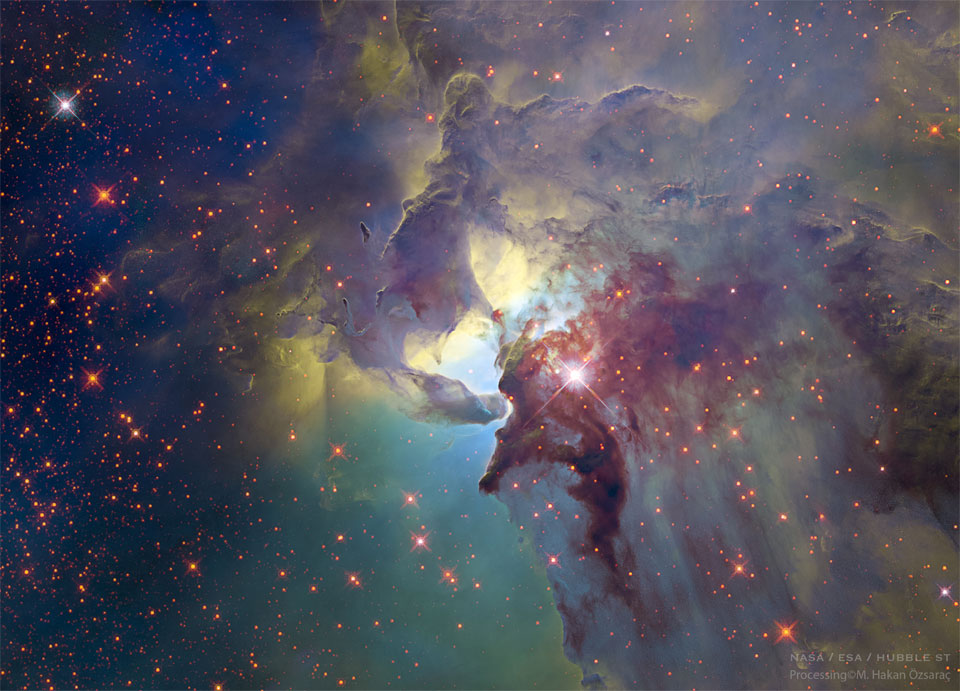
Norman Gary Foster (born May 25, 1936) is an American musician who plays saxophone, clarinet, and flute. He is considered a crossover artist, performing jazz, pop, and classical music. He has been prominent in the film, television, and music industries for five decades, having performed on over 500 movie scores and with over 200 orchestras.
He has recorded on numerous Grammy, Academy Award, Emmy, and Golden Globe winning media and soundtracks for artists and composers such as Carol Burnett, Bob Dylan, Barbra Streisand, Mel Torme, Toshiko Akiyoshi, Frank Sinatra, Pat Williams, John Williams, Natalie Cole, Jerry Fielding, Cal Tjader, Marty Paich, and Michael Bublé.
Foster received the Most Valuable Player Award for woodwind doubling from The Recording Academy.
Gary Foster was born in Leavenworth, Kansas, in 1936. He started on the clarinet at age thirteen. His first musical inspiration was Olin Parker, a school music director and teacher who introduced him to the music of Count Basie, Woody Herman, and many other types of music. He listened closely to the Woody Herman Orchestra’s recording of “Four Brothers”, which featured saxophonists Stan Getz, Zoot Sims, and Serge Chaloff. For Foster, Getz stood out on the tenor saxophone because of his tone. Foster also acknowledged the influence of Lester Young and Charlie Parker.
Jazz critic Zan Stewart compared Foster’s style to that of Lee Konitz, Paul Desmond, and Art Pepper (West Coast Jazz style). The music of Lennie Tristano and the concepts taught to him by Warne Marsh have been of great inspiration and influence over the years.
more...Marshall Belford Allen (born May 25, 1924) is an American free jazz and avant-garde jazz alto saxophone player. He also performs on flute, oboe, piccolo, and EWI (an electronic valve instrument made by Steiner, Crumar company).
Allen is best known for his work with Sun Ra, having recorded and performed mostly in this context since the late 1950s, and having led Sun Ra’s Arkestra since 1993, after Sun Ra’s Death. Critic Jason Ankeny describes Marshall as “one of the most distinctive and original saxophonists of the postwar era.” Marshall Allen was born in Louisville, Kentucky, United States.
During the Second World War he enlisted in the 92nd Infantry Division and was stationed in France. Allen studied alto saxophone in Paris and played in Europe with Art Simmons and James Moody.
He is best known for his mastery of pyrotechnic effects on the alto – he has said that he “wanted to play on a broader sound basis rather than on chords” (1971 interview with Tam Fiofori)). The opportunity came through his long association with Sun Ra, with whom he performed almost exclusively from 1958 to Ra’s death in 1993, although he did record outside the Arkestra, with Paul Bley‘s group in 1964 and Olatunji‘s group during the mid-1960s. Critic Scott Yanow has described Allen’s playing as “Johnny Hodges from another dimension”.
more...Jimmy Hamilton (May 25, 1917 – September 20, 1994) was an American jazz clarinetist and saxophonist, who was a member of the Duke Ellington Orchestra.
Hamilton was born in Dillon, South Carolina, United States, and grew up in Philadelphia. Having learned to play piano and brass instruments, in the 1930s he started playing the latter in local bands before switching to clarinet and saxophone. During this time he studied with clarinet teacher Leon Russianoff. In 1939, he played with Lucky Millinder, Jimmy Mundy, and Bill Doggett, going on to join the Teddy Wilson sextet in 1940. After two years with Wilson, he played with Eddie Heywood and Yank Porter.
In 1943, he replaced Barney Bigard in the Duke Ellington orchestra and stayed with Ellington until 1968. His style was different on his two instruments: on tenor saxophone he had an R&B sound, while on clarinet he was much more precise and technical. He wrote some of his own material in his time with Ellington.
more...Bill Robinson, nicknamed Bojangles (born Luther Robinson; May 25, 1878 – November 25, 1949 Richmond, VA), was an American tap dancer, actor, and singer, the best known and the most highly paid African-American entertainer in the United States during the first half of the 20th century. His long career mirrored changes in American entertainment tastes and technology. His career began in the age of minstrel shows and moved to vaudeville, Broadway theatre, the recording industry, Hollywood films, radio, and television.
According to dance critic Marshall Stearns, “Robinson’s contribution to tap dance is exact and specific. He brought it up on its toes, dancing upright and swinging,” adding a “hitherto-unknown lightness and presence. His signature routine was the Stair Dance, in which he would tap up and down a set of stairs in a rhythmically complex sequence of steps, a routine that he unsuccessfully attempted to patent. He is also credited with having popularized the word copacetic through his repeated use of it in vaudeville and radio appearances.
He is best known today for his dancing with Shirley Temple in a series of films during the 1930s, and for starring in the musical Stormy Weather (1943), loosely based on his own life and selected for preservation in the National Film Registry. He used his popularity to challenge and overcome numerous racial barriers. Robinson was one of the first minstrel and vaudeville performers to appear as Black without the use of blackface makeup, as well as one of the earliest Black performers to perform solo, overcoming vaudeville’s two-colored rule. Additionally, he was an early Black headliner in Broadway shows. Robinson was the first Black performer to appear in a Hollywood film in an interracial dance team (with Shirley Temple in The Little Colonel, 1935), and the first Black performer to headline a mixed-race Broadway production.
Robinson came under heavy criticism for his apparent tacit acceptance of racial stereotypes of the era, with some critics calling him an Uncle Tom. He strongly resented this, and his biographers suggested that critics were underestimating the difficulties faced by Black performers engaging with mainstream White culture at the time, and ignoring his many efforts to overcome racial prejudice. In his public life, Robinson led efforts to persuade the Dallas Police Department to hire its first Black policeman; lobby President Franklin Delano Roosevelt during World War II for more equal treatment of Black soldiers; and stage the first integrated public event in Miami, a fundraiser which was attended by both Black and White city residents.
Robinson was a popular figure in both the Black and White entertainment worlds of his era, and is remembered for the support that he gave to fellow performers, including Fred Astaire, Eleanor Powell, Lena Horne, Jesse Owens and the Nicholas Brothers. Sammy Davis Jr. and Ann Miller credited him as a teacher and mentor, Miller saying that he “changed the course of my life.” Gregory Hinesproduced and starred in a biographical movie about Robinson for which he won the NAACP Best Actor Award.
Despite being the highest-paid Black performer of the time, Robinson died penniless in 1949, his funeral paid for by longtime friend Ed Sullivan. In 1989, Congress designated Robinson’s birthday of May 25 as National Tap Dance Day.
more...More Posts
- The Cosmos with NGC 3597
- Louis Myers Day
- Frank Socolow Day
- World Music with Lazaro Ros
- Daily Roots with Coco Tea
- The Cosmos with AM 0644-741
- Jack McDuff Day
- Blind James Campbell Day
- World Music with Rosie & Allen Sula
- Daily Roots with Joe Gibbs and the Professionals
- The Cosmos with the Sun
- B. B. King Day
- Charlie Byrd Day
- Joe Venuti Day
- World Music with Mihrigul Hesen
- Daily Roots with the Twinkle Brothers
- “Second Chance” Elliot Park 9-15-18 1pm
- The Cosmos with NGC 2392
- Julian “Cannonball” Adderley Day
- Roger Ram Ramirez
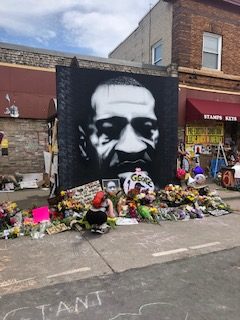
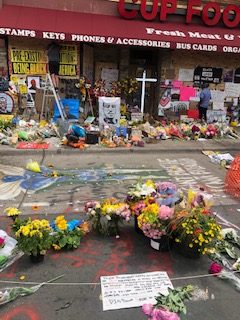
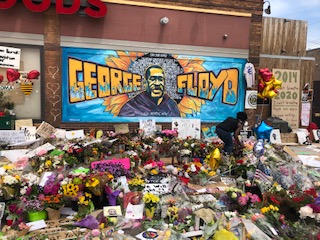
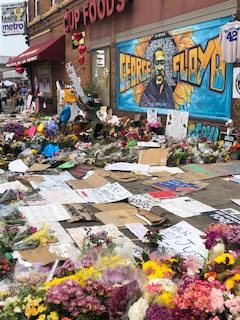

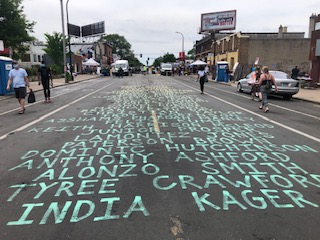 Pics from Memorial Site 2020
Pics from Memorial Site 2020